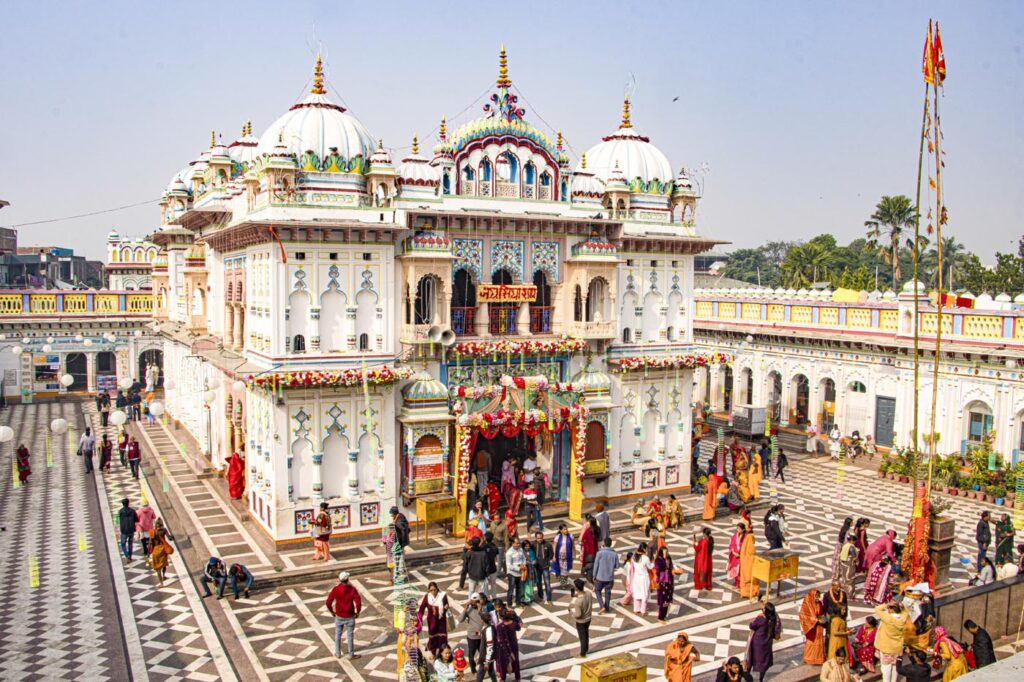The new temple in Ayodhya at Ram’s birthplace has cast a spotlight on
Nepal’s Janaki Temple—Sita’s home, where She and Ram were married
By Nikki Thapa, Kathmandu
Sita is a paragon of womanhood—beautiful, graceful, devout, courteous, loyal and humble. Each year, busloads of devotees from across Nepal and India converge at Her birthplace in Janakpur, southern Nepal, to honor and celebrate Her marriage there to Lord Ram of Ayodhya. This sacred occasion, known as Bibaha Panchami, is observed on the fifth day of the waxing moon in late November or early December.
In February 2024, my fellow journalist Rajeev Gurung and I had made a five-day pilgrimage to the newly inaugurated Ram Janmabhoomi Mandir in Ayodhya. We reported on Lord Ram’s return to His birthplace after 500 years for Hinduism Today (July/August/September 2024 issue). That article made reference to Janaki Temple, where Ram wedded Sita approximately 7,000 years ago, during the Treta Yuga. The editors requested a follow-up report on Janaki Temple, so we journeyed there in early December to witness the annual celebration of the divine marriage. But first, let’s start with a bit of background.
History of the Janaki Temple
The temple is located in Janakpur, 140 miles southeast of Kathmandu, the capital city of Nepal, and just over 14 miles from the Nepal-India border crossing at Bhittamore. Janakpur was founded in the early 18th century on what is believed to be the site of the ancient capital of Mithila. According to Mahant Ram Tapeswar Das Vaishnav, the temple’s 16th head priest, worship of Sita here has been performed continuously for the last five centuries, while the structure that we see today was built 113 years ago.
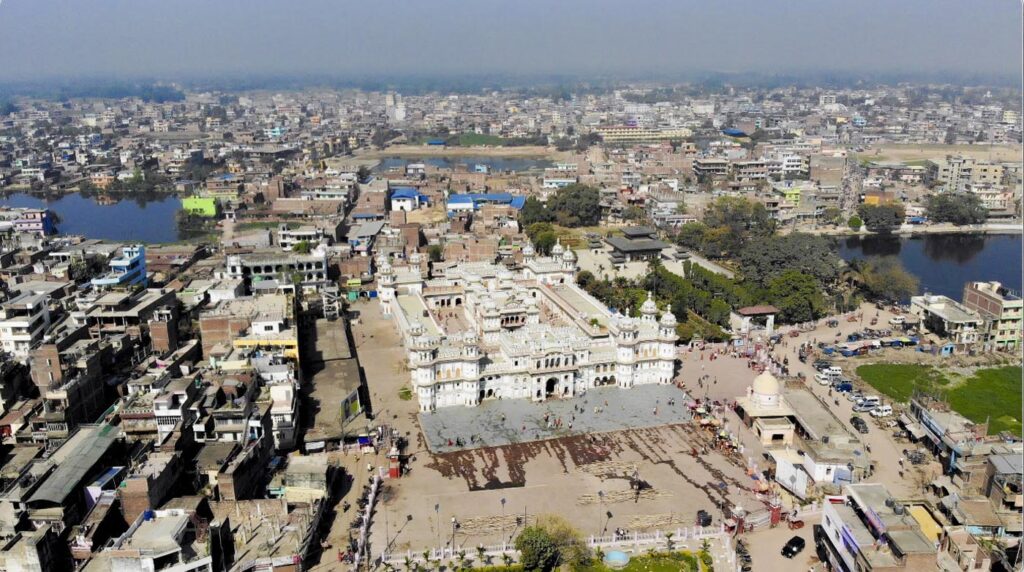
While other Nepali temples are built in pagoda style, this one is unique, as its distinctive architectural style blends the Mughal and Koiri or Rajput designs. The present temple was built by Queen Vrisha Bhanu Kumari of Tikamgarh, Madhya Pradesh, India, on the site of the original modest Janaki wedding shrine. The queen vowed to construct a grand Sita temple if she were blessed with a child. Upon the child’s birth, she gave 900,000 gold coins for the construction, which began in 1894 and was completed in 1911.
The beautiful white edifice, 50 feet tall, sits in the center of a chowk, a rectangular building with a large central courtyard. It takes up about three acres of land. It is often compared to a palace for its colorful facades and intricate carvings. The domes and turrets, arches, intricate latticework and carvings, vibrantly colored glasswork and miniature towers resemble Mughal-era architecture.
The central sanctum, made entirely of silver, houses Sita, the primary Deity, draped in ornate clothing and traditional Nepali jewelry. She is revered as the Goddess of purity, strength and devotion. On Sita’s left is Lord Ram, Her husband, the seventh incarnation of God Vishnu. Also enshrined here are Ram’s three brothers, Laxman, Bharat and Shatrughna, and their consorts—Sita’s sister Urmila and Her cousins Mandavi and Shrutakirti. The four marriages solidified the alliance between the kingdoms of Mithila and Ayodhya.
The Bibaha Panchami Festival
Turning now to the wedding festival, the first day, called Nagar Parikrama, “city circumambulation,” mark the arrival of Ram and Laxman in Janakpur. Locals sing ancient Mithila songs to welcome them and Vishwamitra, their guru. The second day, Fulbari Lila, “flower garden play,” commemorates the first meeting of Lord Ram and Goddess Sita. The third day is Dhanus Yagya, “bow sacrifice,” when Ram breaks Pinaka, the celestial bow of Siva, thereby winning Sita’s hand in marriage.
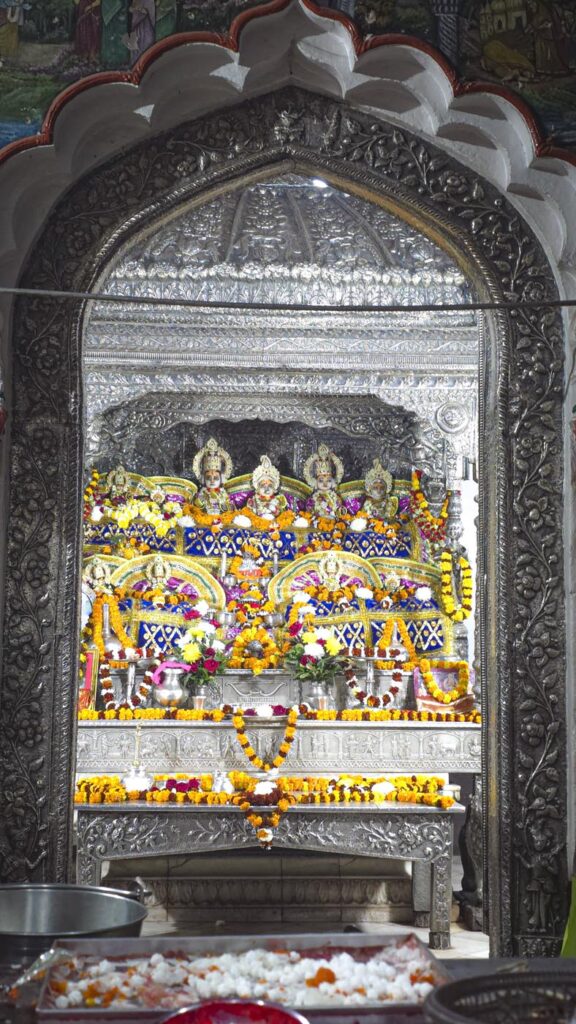
The fourth day, Tilakotsav, “Tilak ceremony,” is the ceremonial welcome of the groom’s party by the priest of the nearby Ram temple. This year, five hundred members of the Vishwa Hindu Parishad came to Janakpur from Ayodhya for the occasion, along with numerous saints representing temples and ashrams in India. On the fifth day, called Matkor, the local women and the guests from Ayodhya gather mud from Dhanush Gangasagar, a large nearby pond, for making the wedding bedi, the consecrated area at Janaki Temple which includes a fire altar and places for the bride and groom and priest.
The main event, Vivaha Panchami, “marriage ceremony on the lunar fifth day,” takes place with a grand procession on the second-to-last festival day. After an exchange of garlands at the adjacent Rangabhumi ground, the images of Ram and Sita are borne on palanquins to the wedding venue, Janaki Mandir, accompanied by music and dancing. The local women sing and celebrate the occasion until late at night.
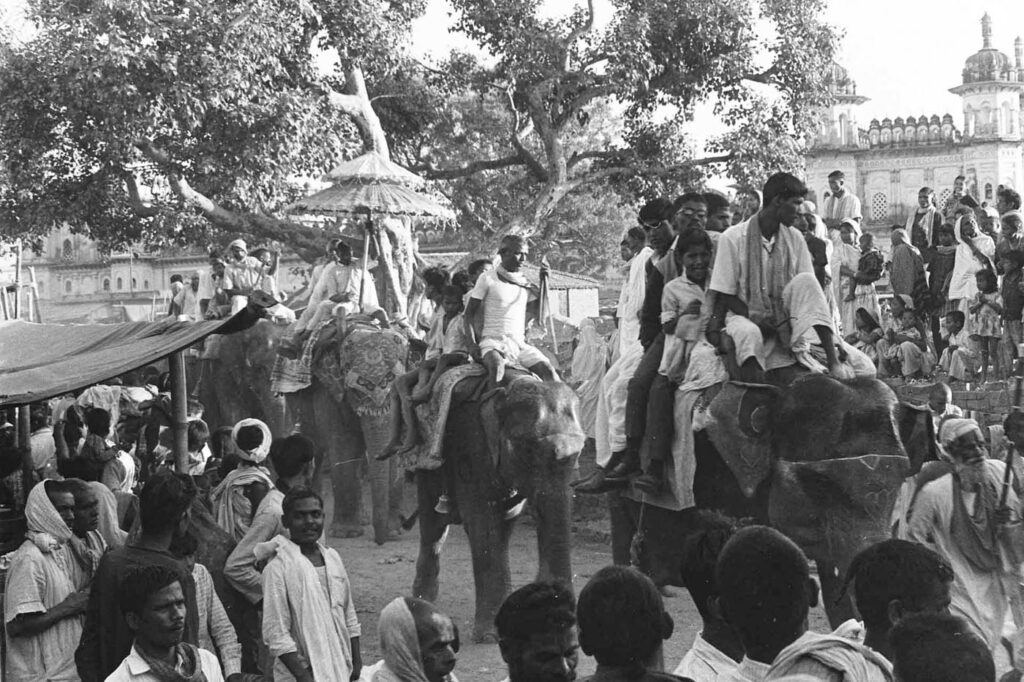
The final day, Ramkaleva, “offering to the groom’s men,” concludes the festivities with Mithila’s traditional 56-course feast, along with gift exchanges and farewells.
Our Festival Experience
Rajeev and I land in Janakpur shortly after the seven-day event has commenced. The city is already brimming with an estimated 1.5 million fervent devotees from Nepal and nearby cities in India. We go straight to the Janaki Temple which stands resplendent, adorned with vibrant lights, marigold flowers and colorful plastic accoutrements. Devotees camping in the square are immersed in prayers, chanting and preparing offerings. Throughout the day, loudspeakers play Mithila songs praising Ram, Sita and the ancient kingdom of Mithilanchal.
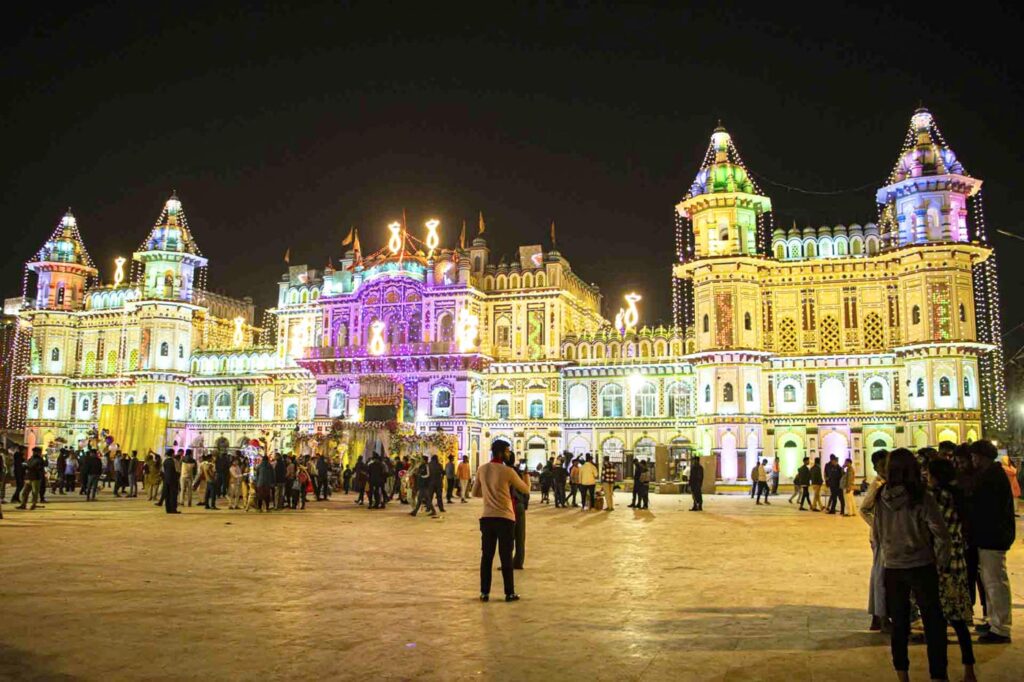
The roads and footpath leading to the temple are lined with stalls offering everything from fruits and other food to clothes, bags, footwear and bangles, creating a vibrant, chaotic scene. In a busy market in the square in front of the temple, vendors sell colored powders, clay lamps, bangles, marigold garlands, coconuts, syrupy sweets and posters of the temple and its Deities.
Although we arrive on the Dhanus Yagya day, we are unable to reach the event itself at the Rangabhumi area due to the overwhelming crowd. We also cannot attend the welcoming of the groom’s party at the Ram temple, but we do witness the subsequent celebration at Janaki Mandir. Here, Mithila boys dressed as Ram and Laxman are on stage, while traditional dances are performed to Mithila songs praising Ram, Sita and Janakpur Dham.
Later in the evening, the sadhus from Ayodhya arrive at the stage. The head priest of Janaki Mandir honors them with colorful scarves. The women of Mithila take pride in the fact that Sri Ram is their son-in-law, giving them the traditional right to tease Him. Their teasing folk songs add light-hearted humor and charm to the occasion.
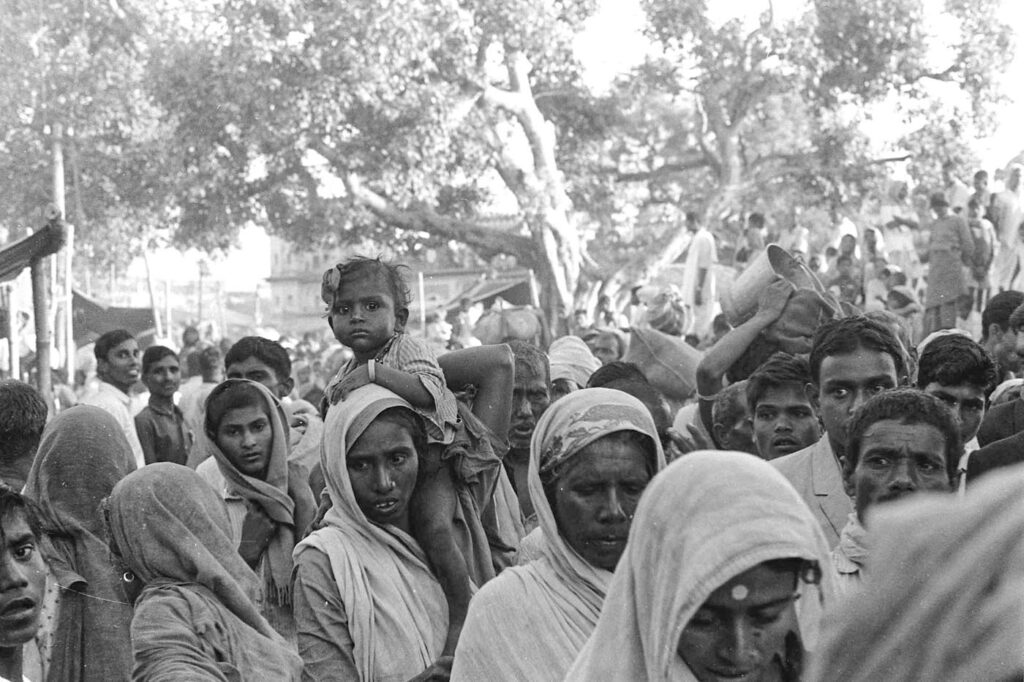
The next day, we participate in the Matkor ritual at Gangasagar Pond, one of Janakpur’s many holy ponds. We set out with the procession of Sita from Janaki Mandir, accompanied by a Nepal army band playing music and devotees singing and dancing. Following the procession, winding my way through the crowd, I find myself a spot near where the Matkor ritual to collect mud is carried out. After an hour-long program of Mithila singing and dancing for Mata Sita and Ganga Arati, a boy dressed as Mata Sita is carried down to the Gangasagar pond shore to collect mud for the bedi. People immediately surround Mata Sita taking photos with their mobile phones, making it difficult for anyone else to fully experience the moment.
Vivaha Panchami
On December 6, the grand day of Vivaha Panchami, we are invited to the Ram temple by Bachan Dev Mandal, a local resident and member of the Ram Yuva Committee, to witness the palanquin procession of Ram and Sita to the Rangabhumi ground. It begins with tight security a little after 1:00pm. Around 2,000 security forces are deployed to manage the tens of thousands of pilgrims. The Hindus from Ayodhya join the procession on trucks behind Ram’s palanquin, followed by tractors carrying boys dressed as Ram and Laxman. Hundreds of locals line the streets, showering the procession with flowers and sweets.
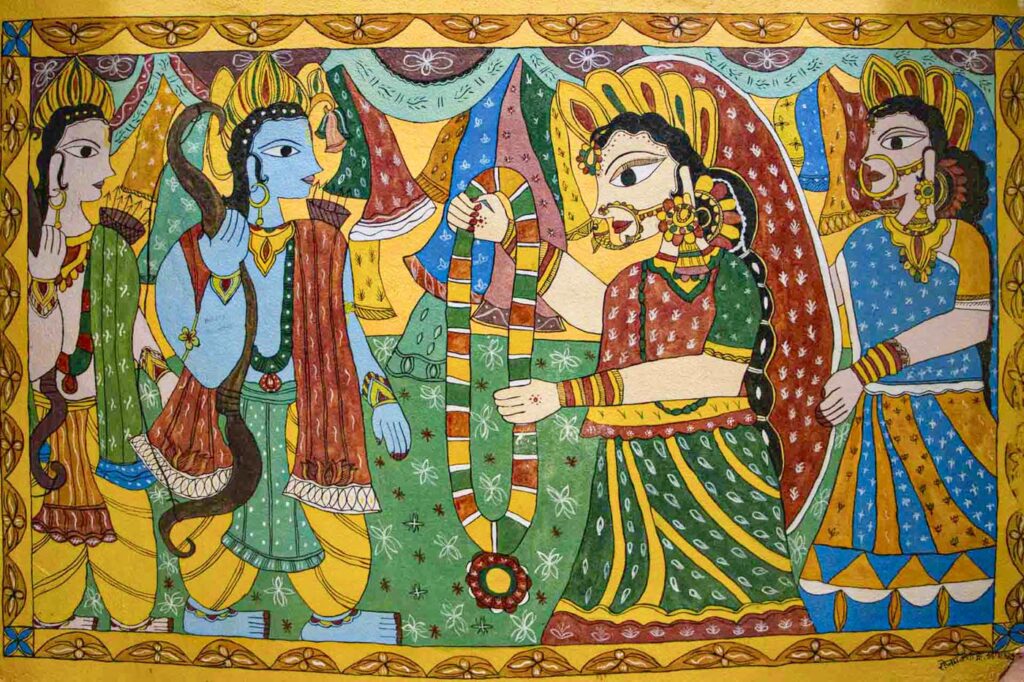
We walk for almost two hours. The energy is palpable as the procession makes its way to the Rangabhumi ground, where Ram’s palanquin joins Sita’s and they exchange garlands as a prelude to their marriage ceremony in the evening. The crowd swells. I find myself squeezed between people and even a stray cow, while Bachan Dev Mandal’s warning echoes in my mind: “Don’t trip, or you will be trampled.” Being short, I struggle to find a vantage point. I eventually manage to secure a few photos while holding my camera high above the sea of heads.
The palanquins arrive at the temple amidst jubilant celebrations. There are moments of panic as people jostle for space; crowd management could be improved. Despite the chaos, the celebrations carry on with unparalleled devotion and joy, encapsulating the essence of Bibaha Panchami.
The celebrations continued late into the night, but we have to cut short our participation due to the overwhelming crowd. Nevertheless, the experience leaves us in awe of the rich Mithila traditions and unshakable faith of the devotees converged in the city to honor Ram and Sita’s sacred union.
Meeting the Pilgrims
Judging by facial features and traditional attire, the majority we meet during the festival are from India, with a few from the hilly regions of Nepal. To accommodate these pilgrims, particularly those from low-income backgrounds, several free lodging facilities have been set up. On the Bibaha Panchami day, arrangements are made for free meals, tea and snacks.
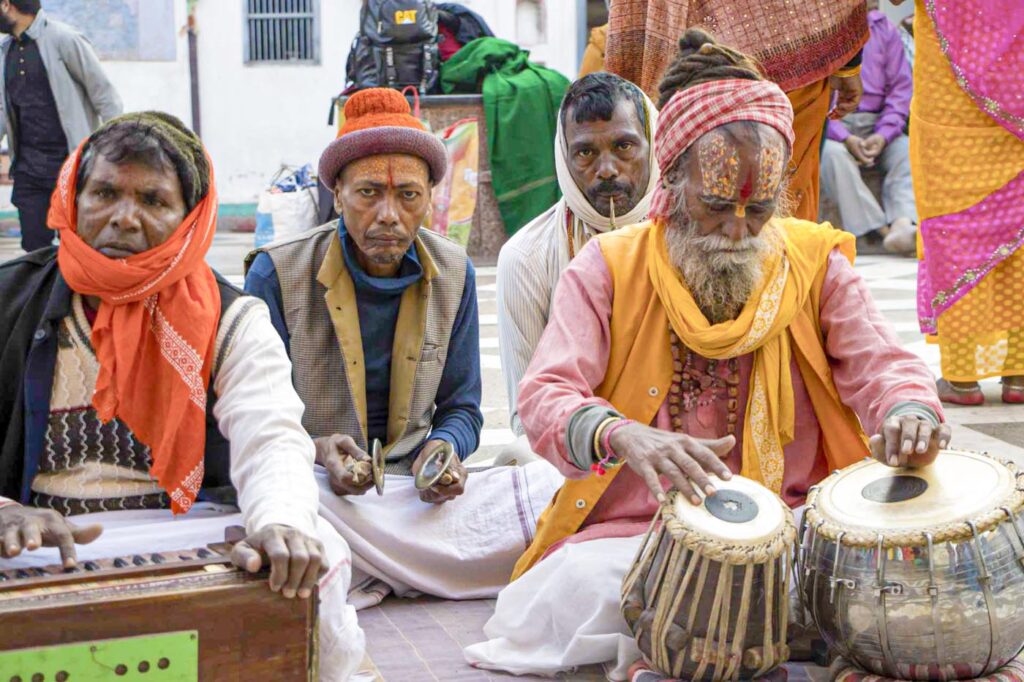
Most we speak with came in groups of 35 to 50 people, their luggage on their head, many without any prior hotel reservation. Ramji Sharma, from Betiya, Bihar, shares, “Our family—my parents, my wife and children—came in a group from Uttar Pradesh. We have just arrived, and we don’t know yet where we will stay. Let’s see what happens.”
Some pilgrims have come to offer help with the festival. Ramji Bhai from Surat, Gujarat, explains his mission: “We are a group of 13 volunteers here to help manage the shoes of pilgrims visiting Janaki Mandir. With such a massive crowd, it is often a hassle to keep track of footwear, and many struggle to find their shoes after darshan. This is our first visit to Janakpur. We all feel extremely fortunate to be doing our service here while getting darshan of Janaki Mata.” Similarly, Jin Mata Trust from Surat (Gujarat, India) offer a 108-meter long chunri (shawl) to Goddess Sita at Janaki Mandir on the occasion of Bibaha Panchami.
Remembering Earlier Days
Dr. Rajendra Bimal, a professor at Tribhuvan University, who was originally from Janakpur but now resides in Kathmandu, reminisces about his childhood. He shares, “If we look for the history of Bibaha Panchami, we don’t find it in great detail in older texts, which might suggest that the festival is only a few centuries old. I witnessed the festival in its full glory when we were little kids. As a child, I felt like royalty. I could visit Janaki Mandir freely because my father was manager of the temple for many years. It was another era, where people would come from far and wide, especially from the north of India. There were theaters, Ram Leela Nataks, circuses, markets and dance troupes everywhere in Janakpur.
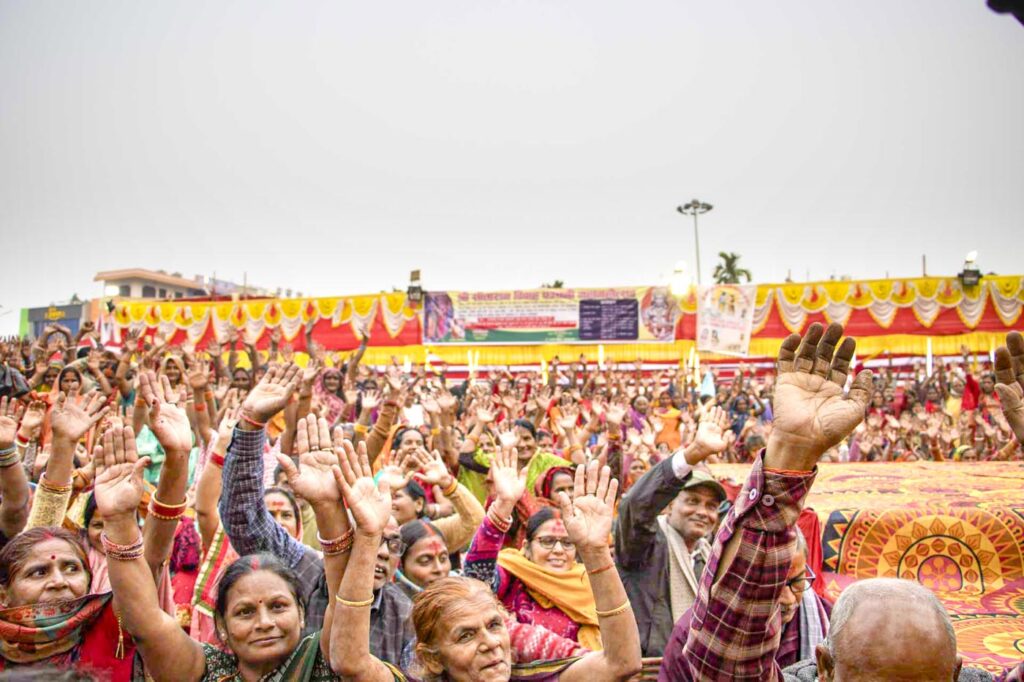
“The city was transformed from a little sleepy town into a bustling ball of light, sounds and joy. The celebrations back then were mesmerizing, attracting people from all across Nepal. Unlike today, the festival was a vibrant gathering of the hills and plains alike.”
He fondly continues, “We used to have thrilling horse races, and visiting devotees would arrive riding majestic elephants. Pilgrims from the hills of Nepal would cook sel roti, traditional sweet breads, and sing Sorathi, their traditional song and dance. People from neighboring Sindhuli district would bring sweet oranges to sell. The people in those days were lucky to experience such an electrifying atmosphere. Everyone came together to celebrate the holy matrimony of Sri Ram and Sita, with traditional artists playing music. Now, sadly, the music comes from loudspeakers, fading the soul of celebrations.”
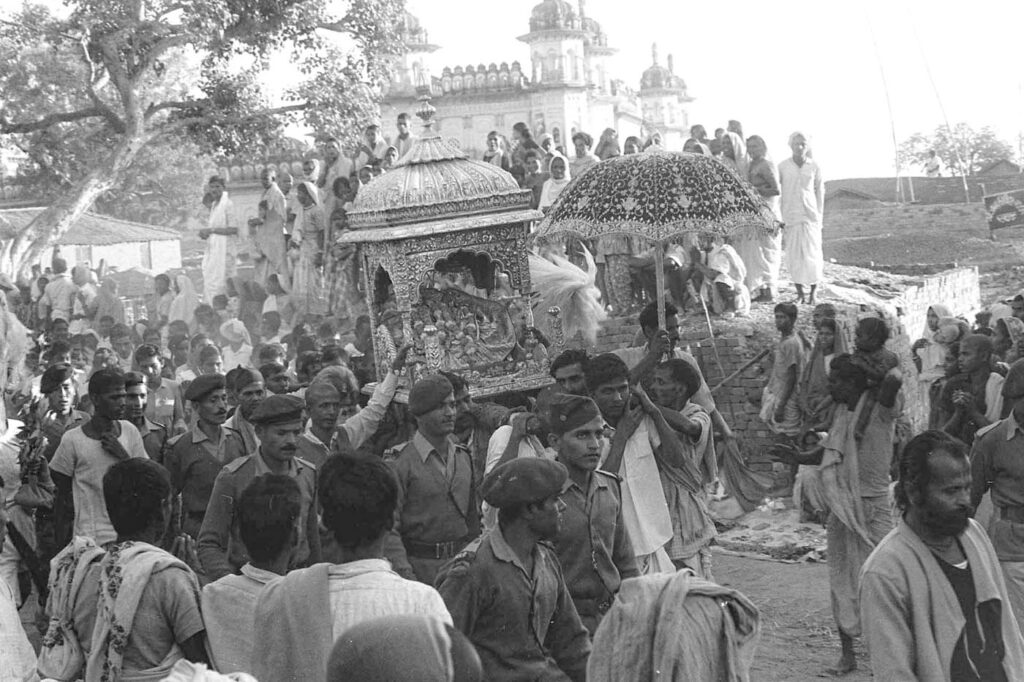
Conclusion
Bibaha Panchami, deeply rooted in the sacred narratives of the Valmiki Ramayana, is more than just a religious festival, it is a vibrant cultural spectacle that offers unparalleled charm for pilgrims and tourists. Janaki Mandir is not just a symbol of Nepal’s rich cultural and spiritual heritage but a place where history and mythology intertwine, and past and present coexist in harmony. Janakpur, an evolving modern city with expanding infrastructures and amenities—the only Nepalese city with train service since 1937—still thrives on its festivals, Mithila art and culture, all infusing the city with a burst of color, music and devotion.
